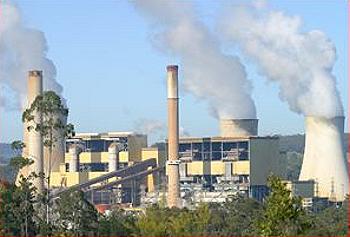
BRUSSELS, Belgium, August 30, 2012 (ENS) – The Australian government and the European Commission intend to link Australia’s newly established greenhouse gas emissions trading scheme and the European Union Emissions Trading System to create the world’s largest carbon market .
The announcement, made Wednesday in Brussels, represents the first step towards linking the established carbon market in Europe with developing carbon markets in the Asia Pacific. Together, the linked Australian and European emissions trading systems will be a major driver of the global transition to a low carbon economy.

At first, a partial link will be established, followed by a full two-way link. The link will enable participants in one system to use units from another system for compliance purposes. Linking emissions trading systems will reduce the cost of cutting carbon pollution, increasing market liquidity and supporting global cooperation on climate change.
The arrangement includes the European Commission seeking a mandate to negotiate a treaty on behalf of the European Union by mid-2015 for the full linking of the emission trading systems from July 2018. The Australian Government has an existing mandate to negotiate a treaty.
In the interim, a partial link will be established to allow Australian businesses to buy and use European Union Emissions Allowances for compliance under the Australian scheme from July 2015, until the full link comes into effect.
To facilitate these arrangements and simplify the path towards full linking, the Australian Government will not proceed with the implementation of its price floor and will limit the use of Kyoto Protocol eligible international units under the Australian scheme.
In addition, Australia will set its price ceiling with reference to the expected 2015-16 price of European allowances.

The Kyoto units are: Certified Emission Reductions (CERs) from the Clean Development Mechanism; Emission Reduction Units (ERUs) from the Joint Implementation Mechanism; and Removal Units (RMUs) from land use, land-use change and forestry activities undertaken in developed countries.
Both parties say linking will provide business with access to more and lower cost emissions abatement units through a well developed, highly liquid carbon market.
As Australia is expected to be a net importer of international units, linking with the EU ETS will provide Australian businesses with enhanced access to international units for use from July 2015.
Linking will also provide European market participants with enhanced business opportunities.
By connecting markets that would otherwise be isolated, linking will create a more liquid carbon market that reduces carbon pollution at a lower cost.
A more liquid carbon market will offer a more stable carbon price signal. It also provides businesses with more opportunities to trade, as businesses with excess units will have access to more buyers and businesses that need more units can purchase them from a wider range of sellers.
A full link will further integrate Australian and European carbon markets by allowing businesses to use carbon units from Australia or Europe for compliance under either system. The European Commission and Australia have identified a number of policy matters to be considered before full linking is established including:
- measurement, reporting and verification arrangements;
- the types and quantities of third party units that can be accepted into either system;
- the role of land-based domestic offsets from Australia’s Carbon Farming Initiative in the linked system;
- any implications for supporting the competitiveness of European and Australian industries, in particular for sectors exposed to a risk of carbon leakage
- comparable market oversight arrangements.
Copyright Environment News Service (ENS) 2012. All rights reserved.
© 2012, Environment News Service. All rights reserved. Content may be quoted only with proper attribution and a direct link to the original article. Full reproduction is prohibited.
